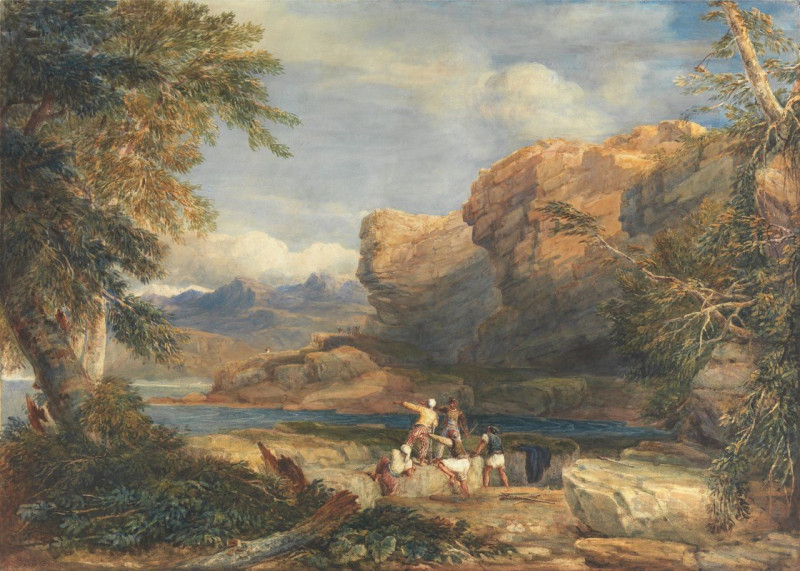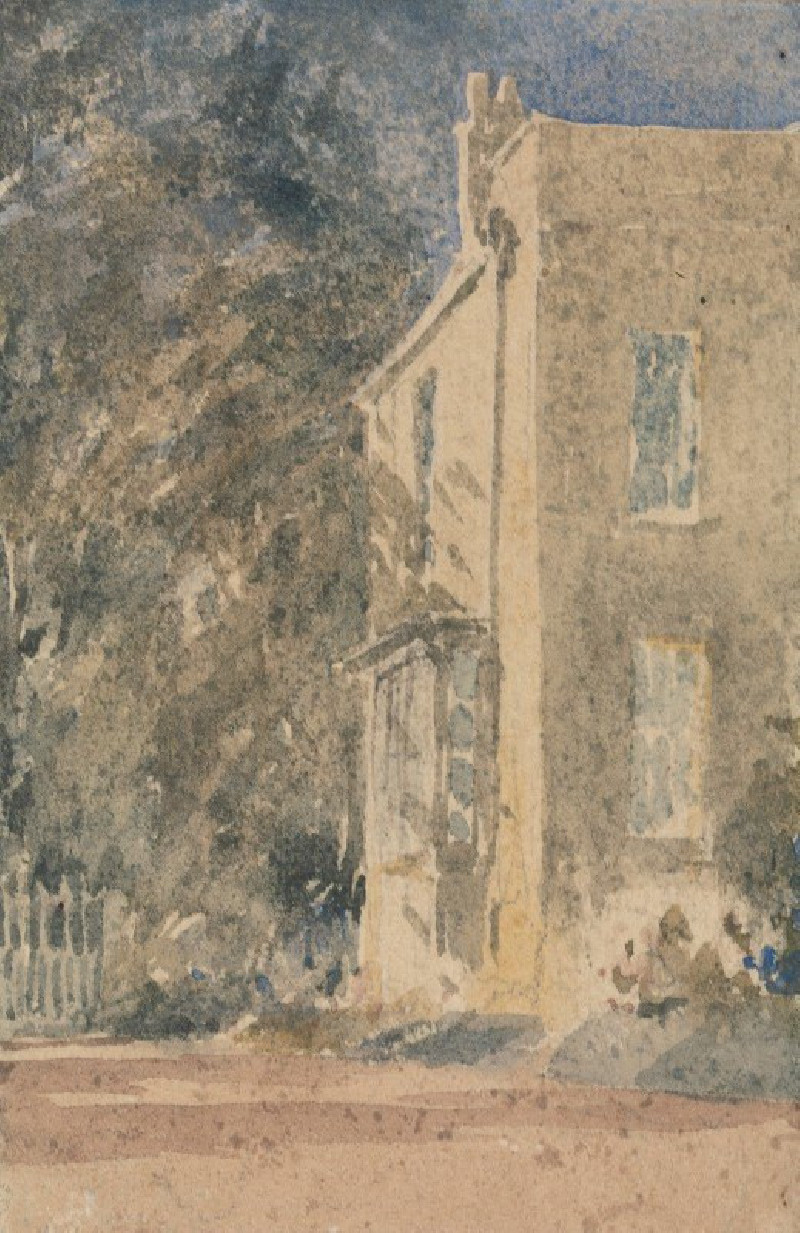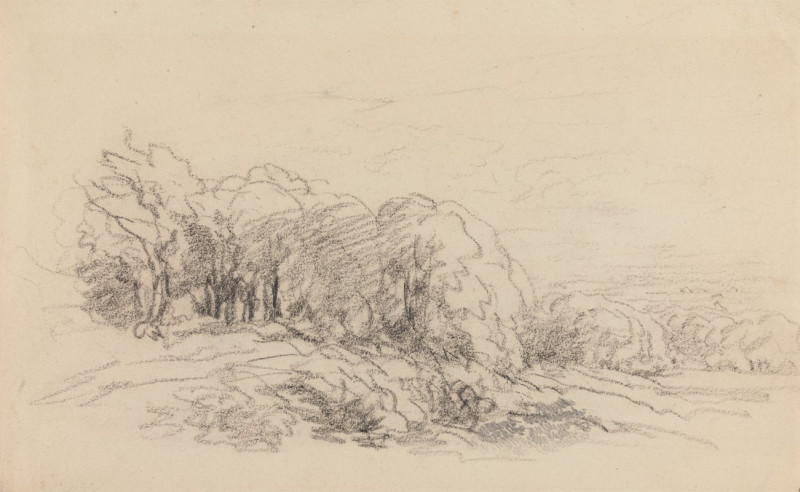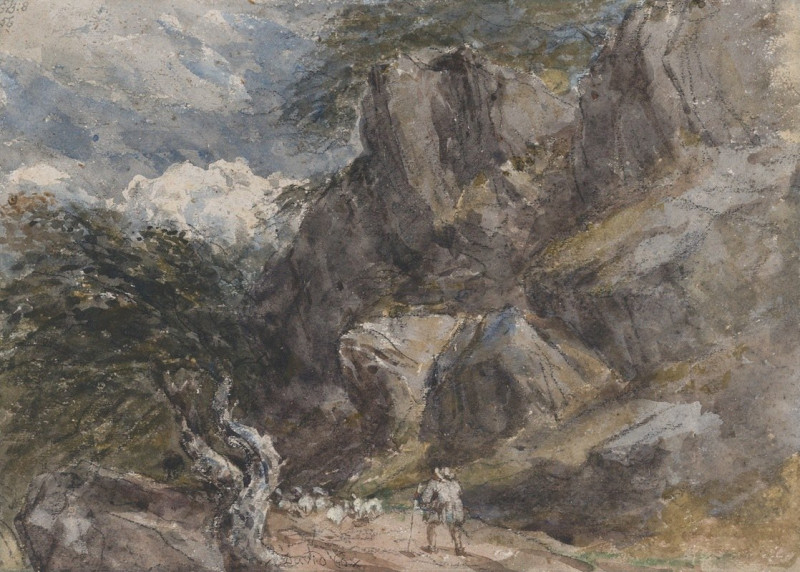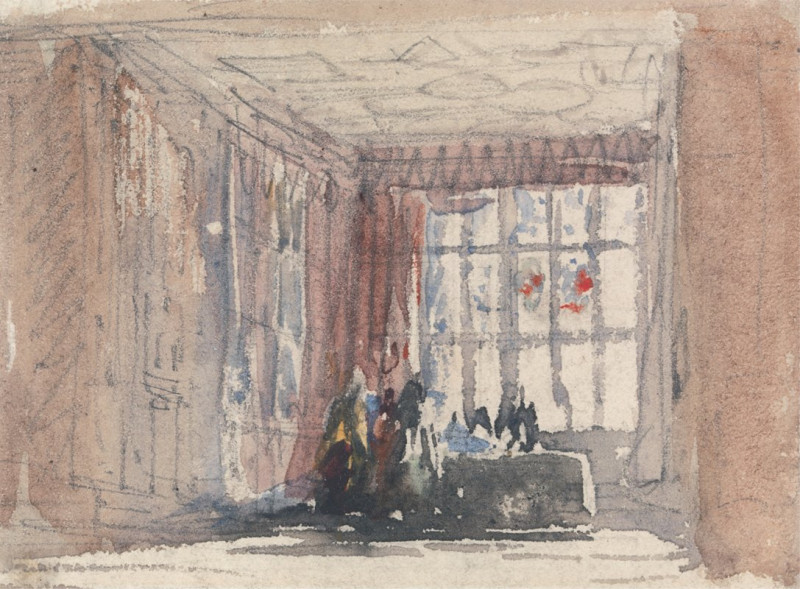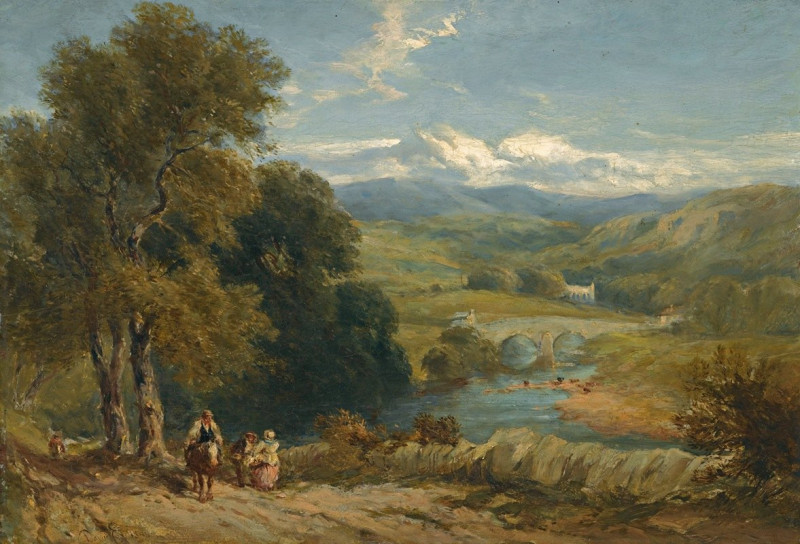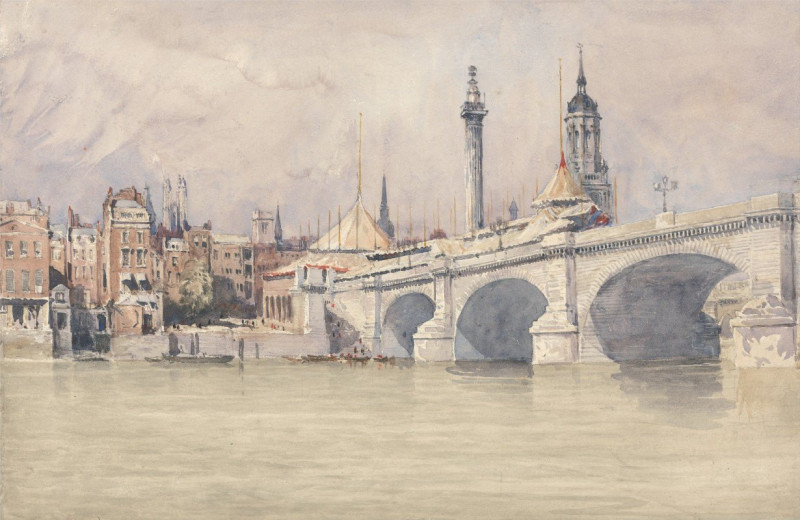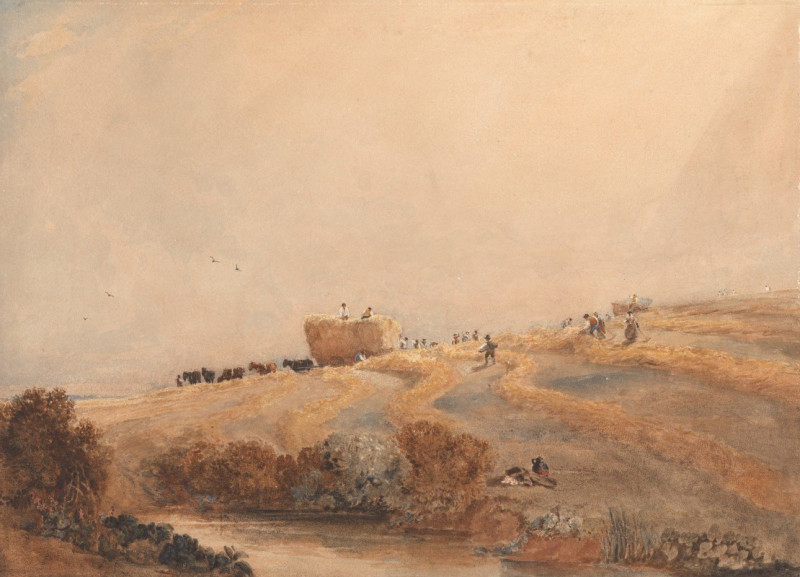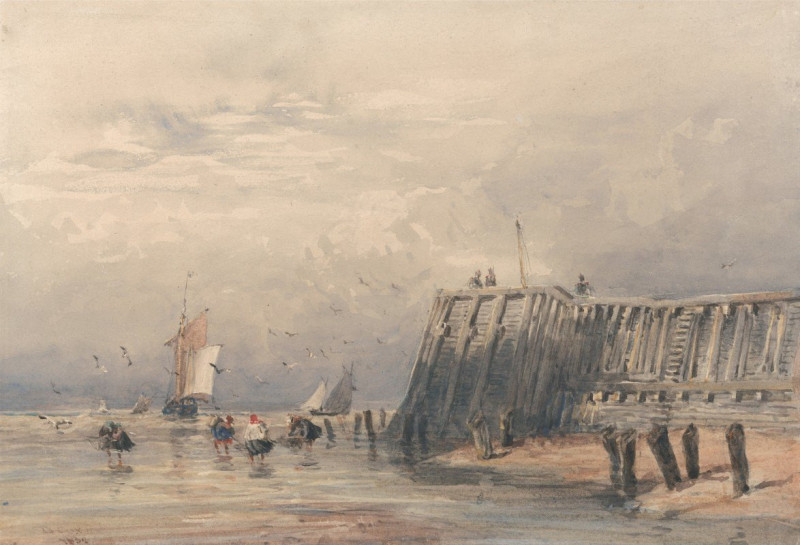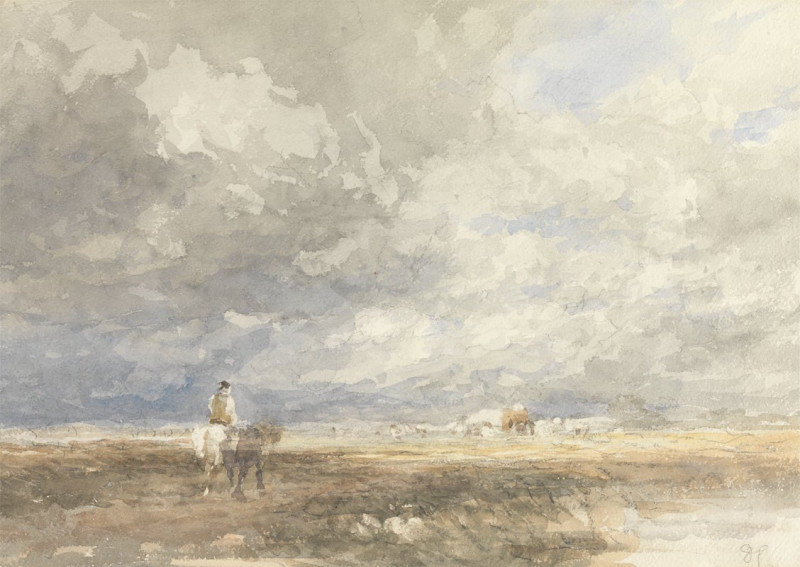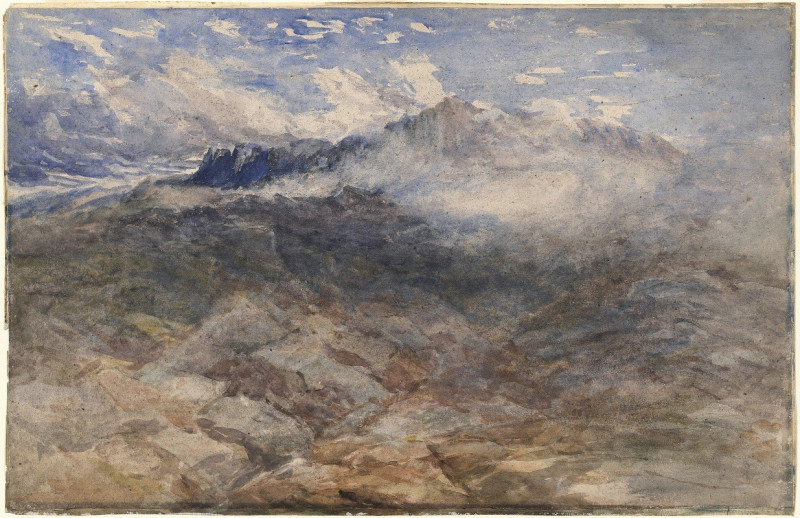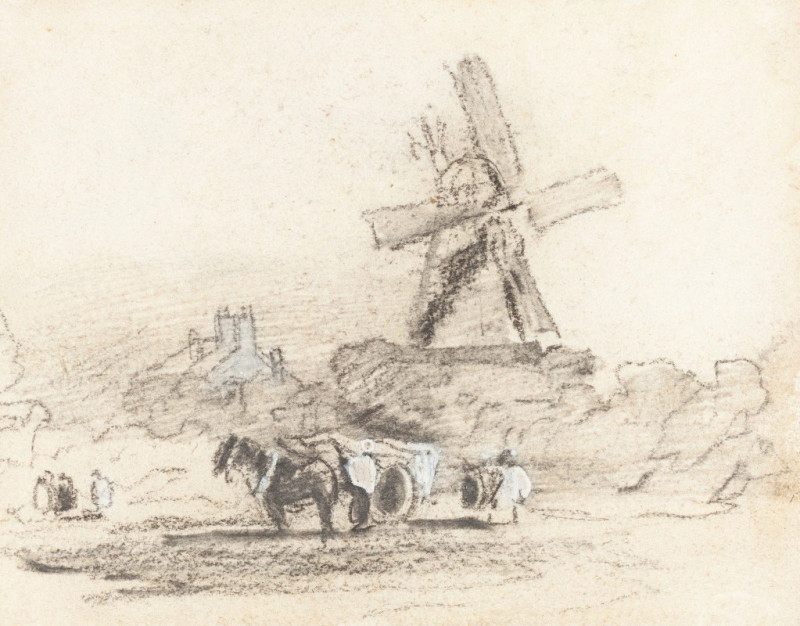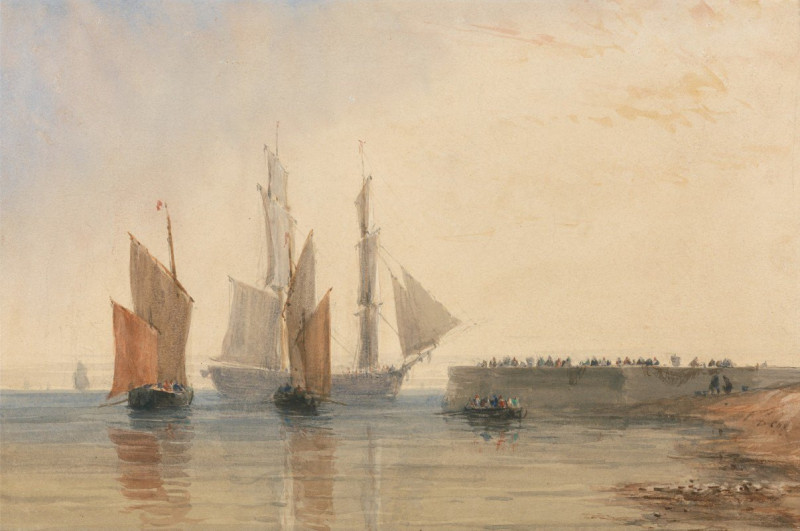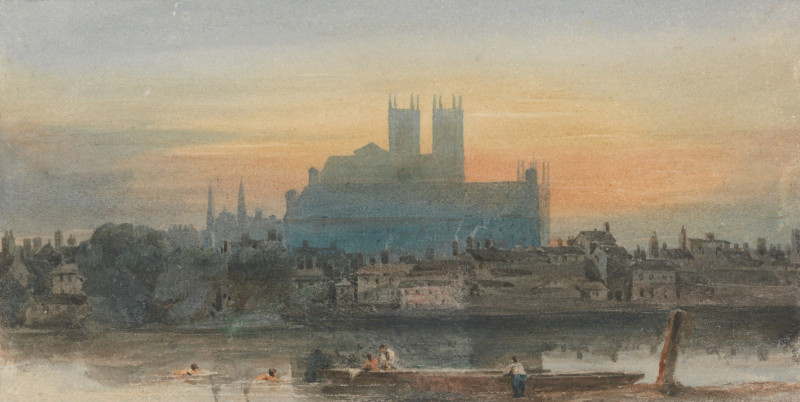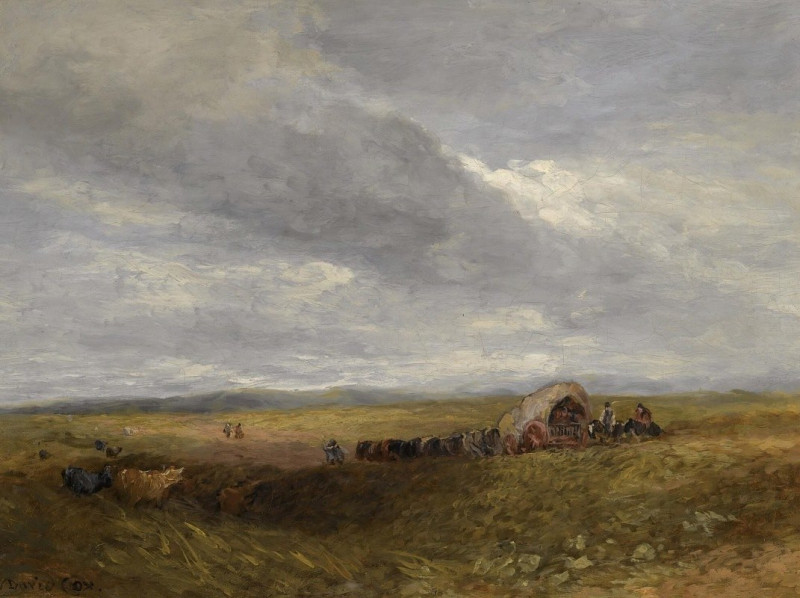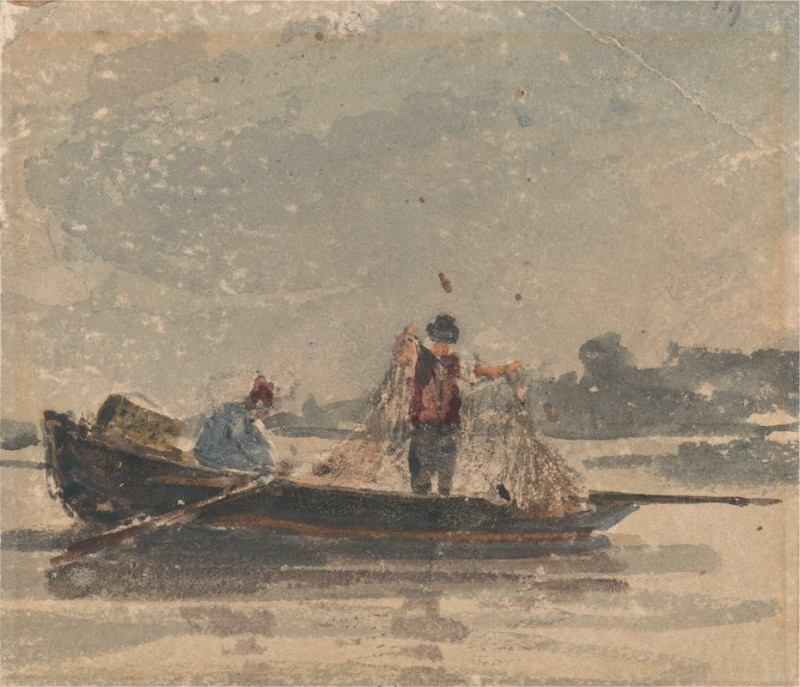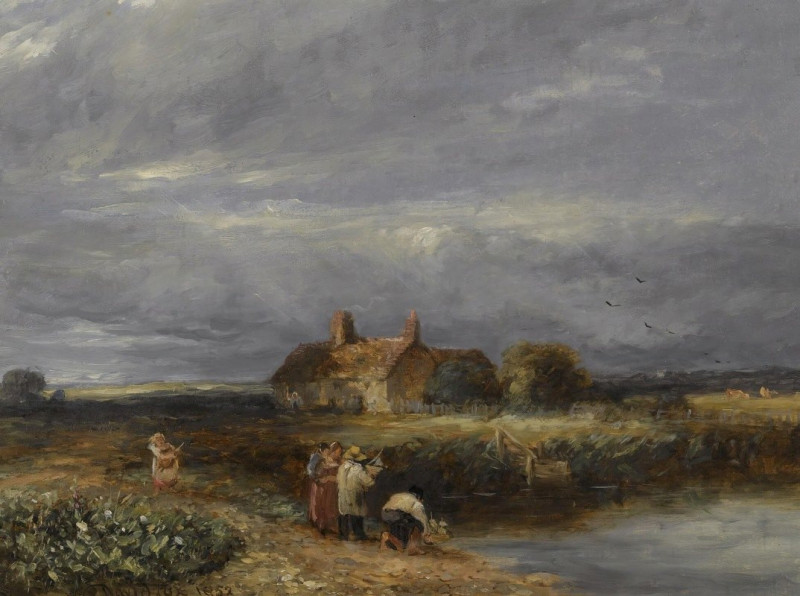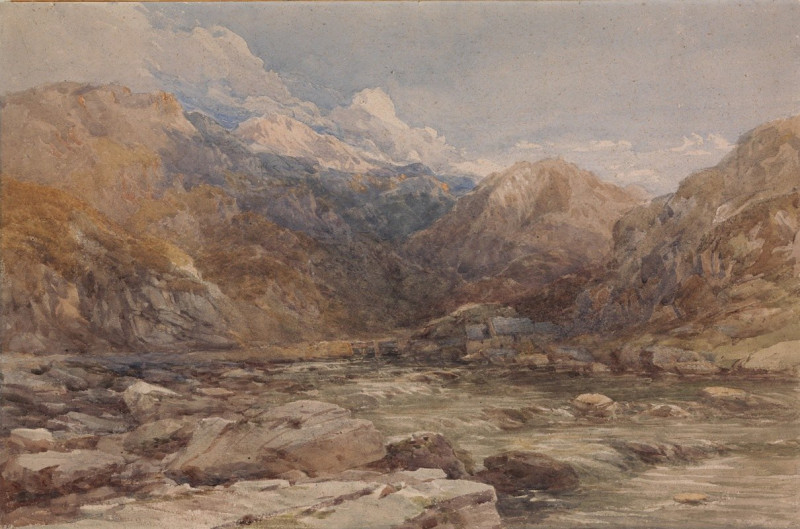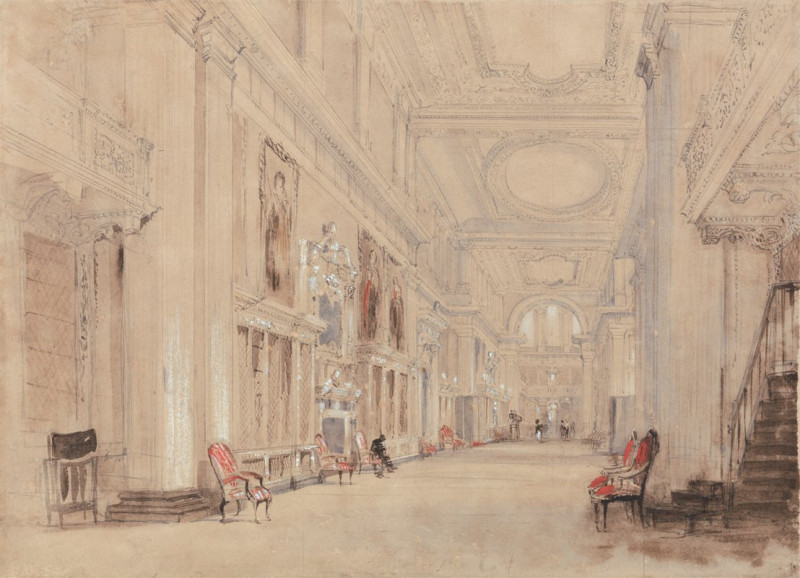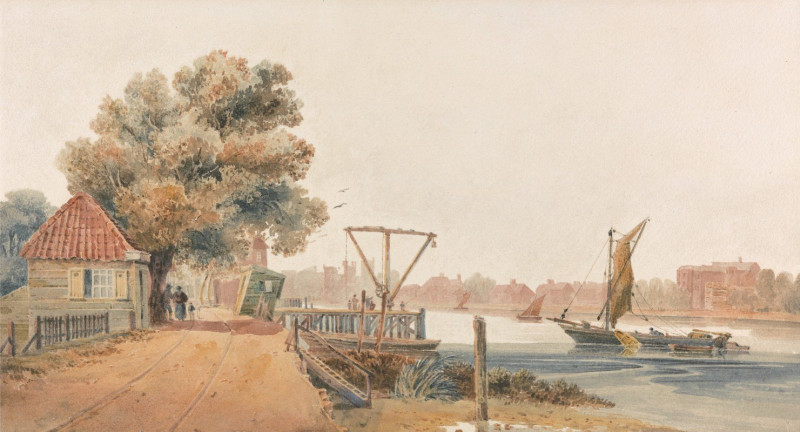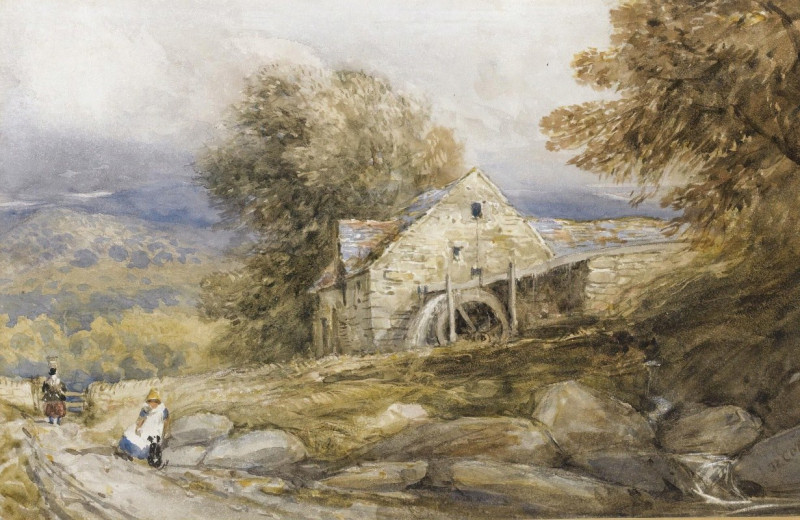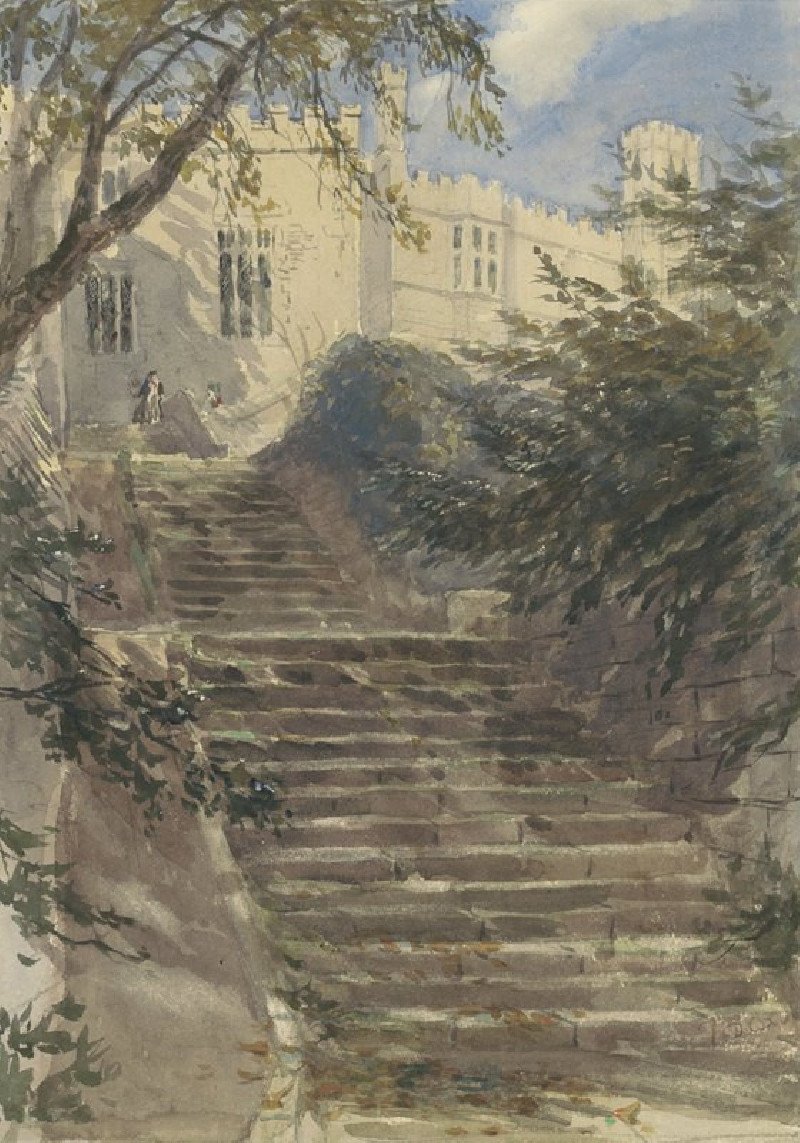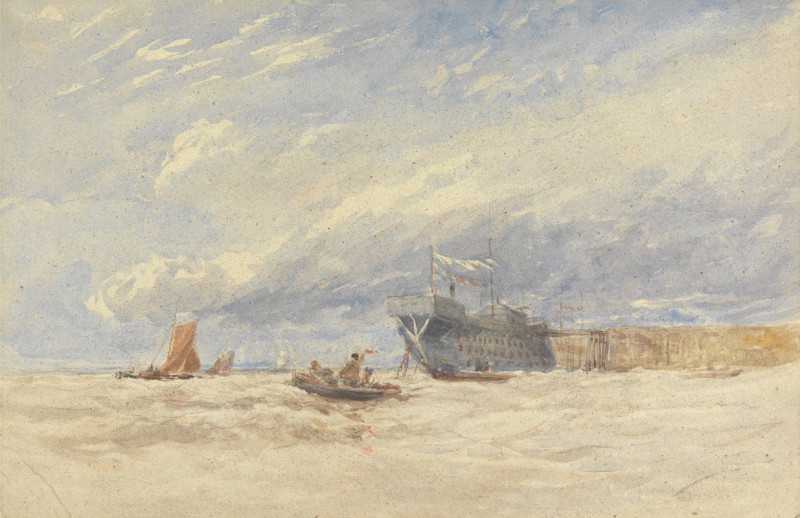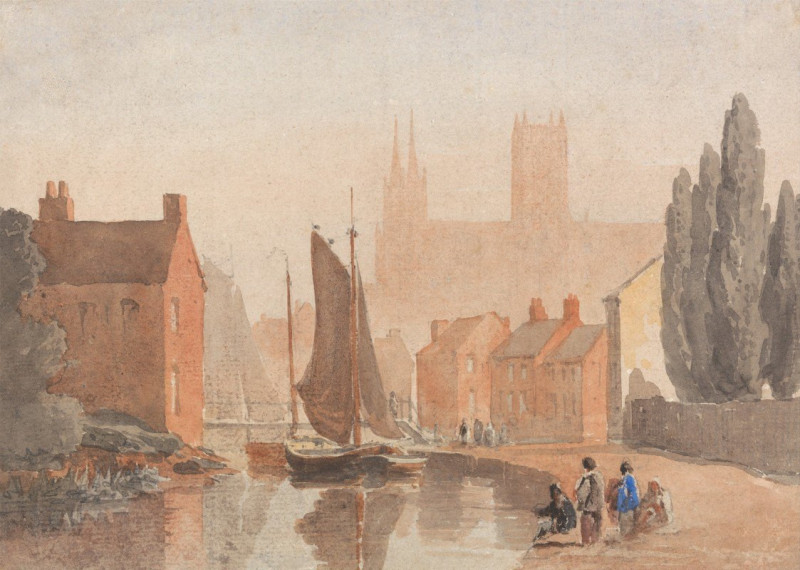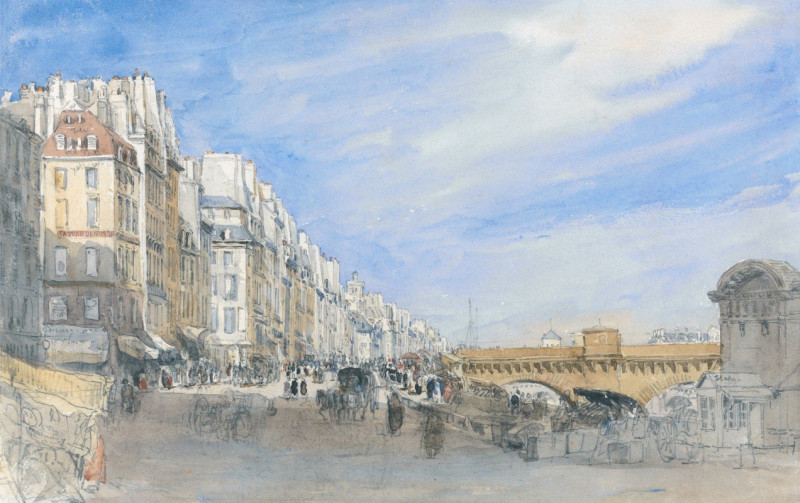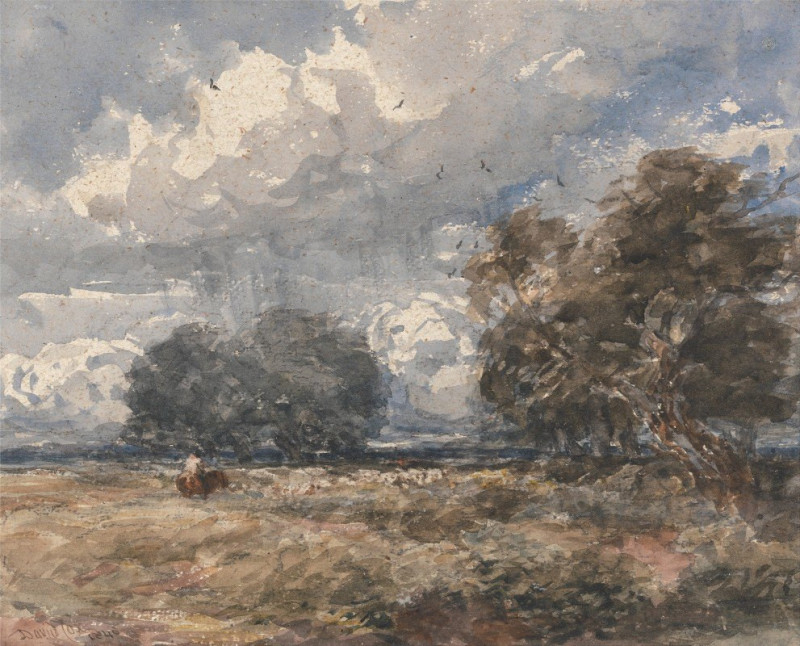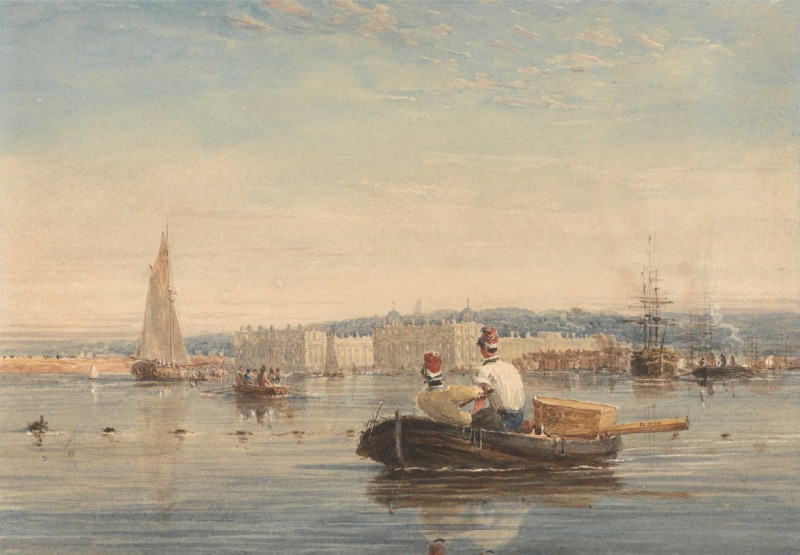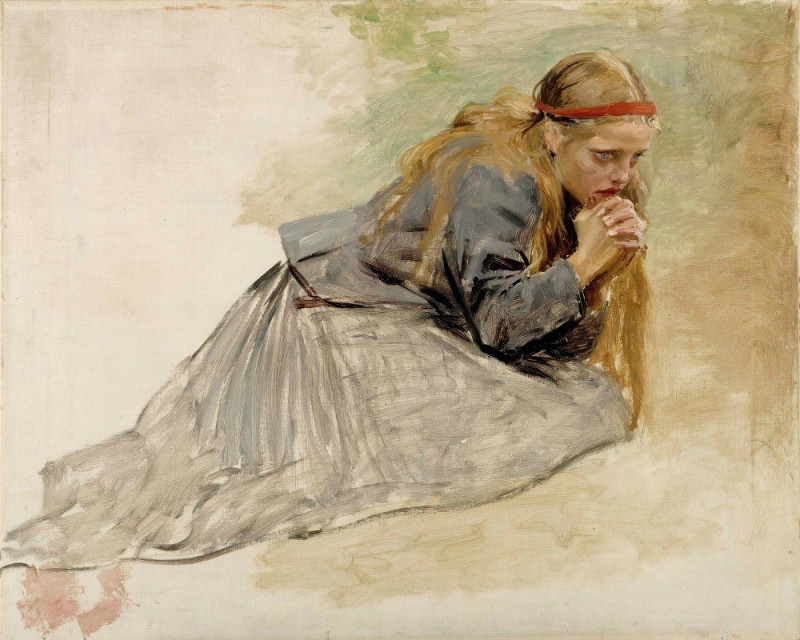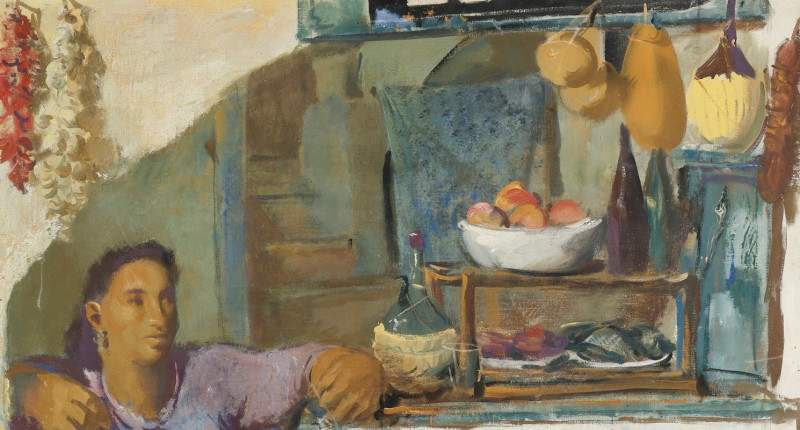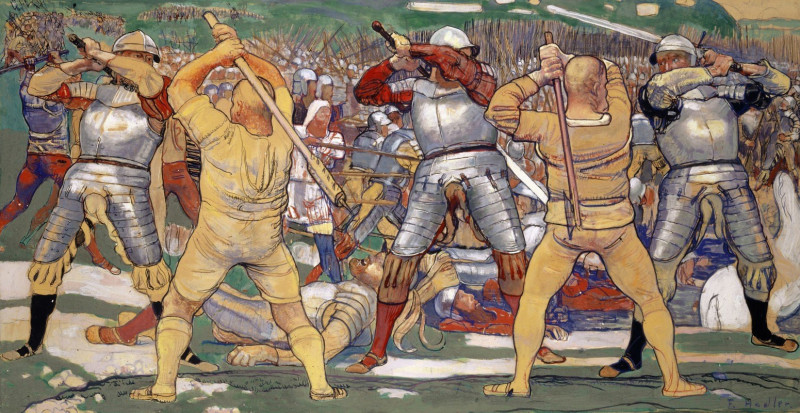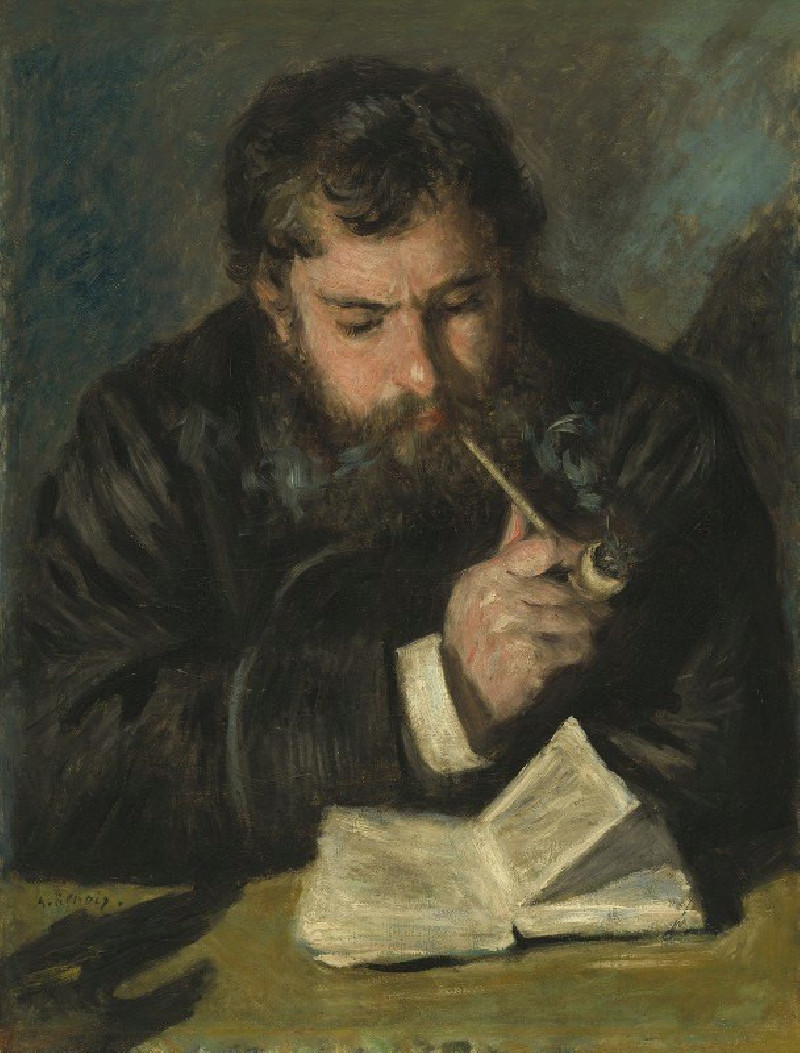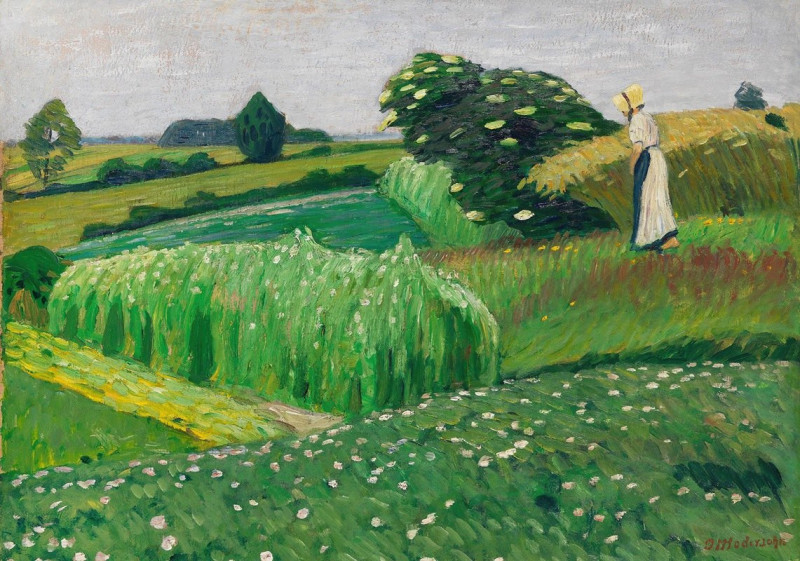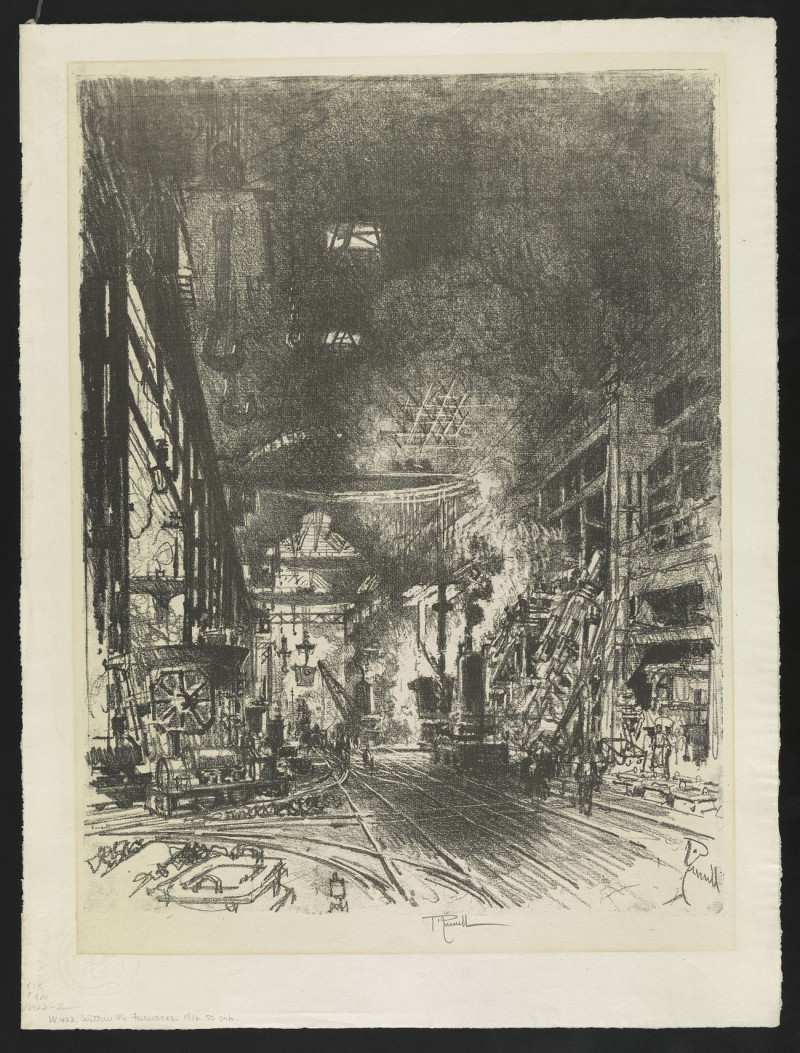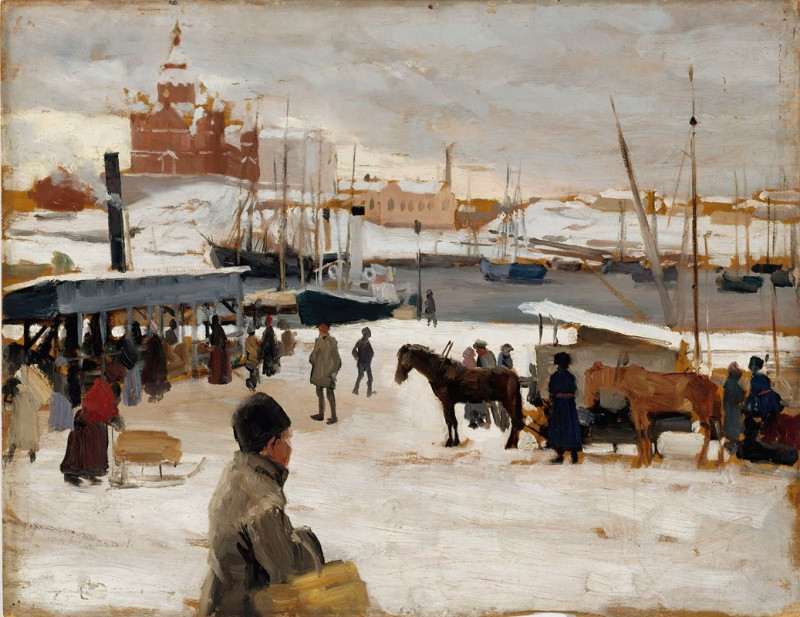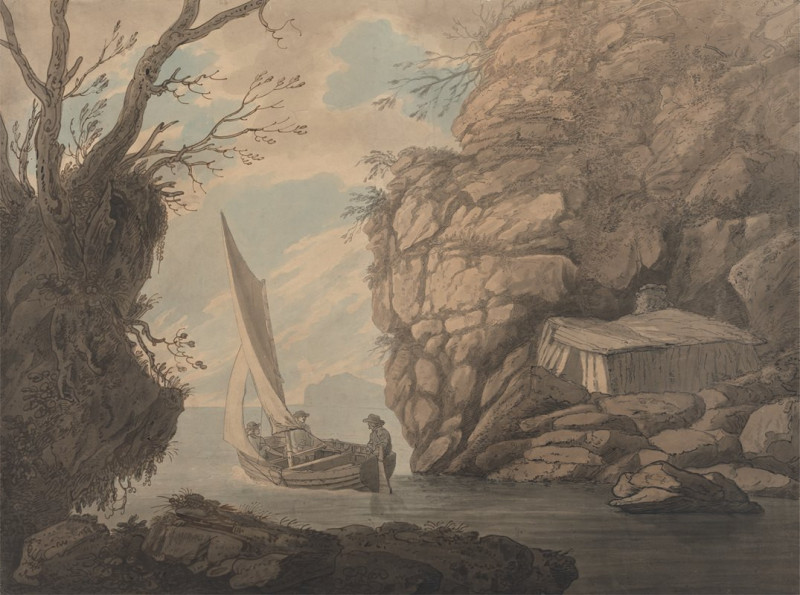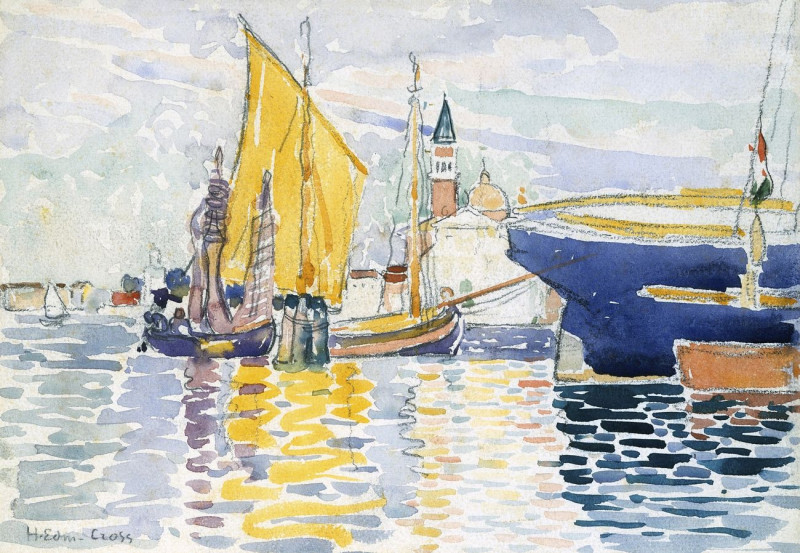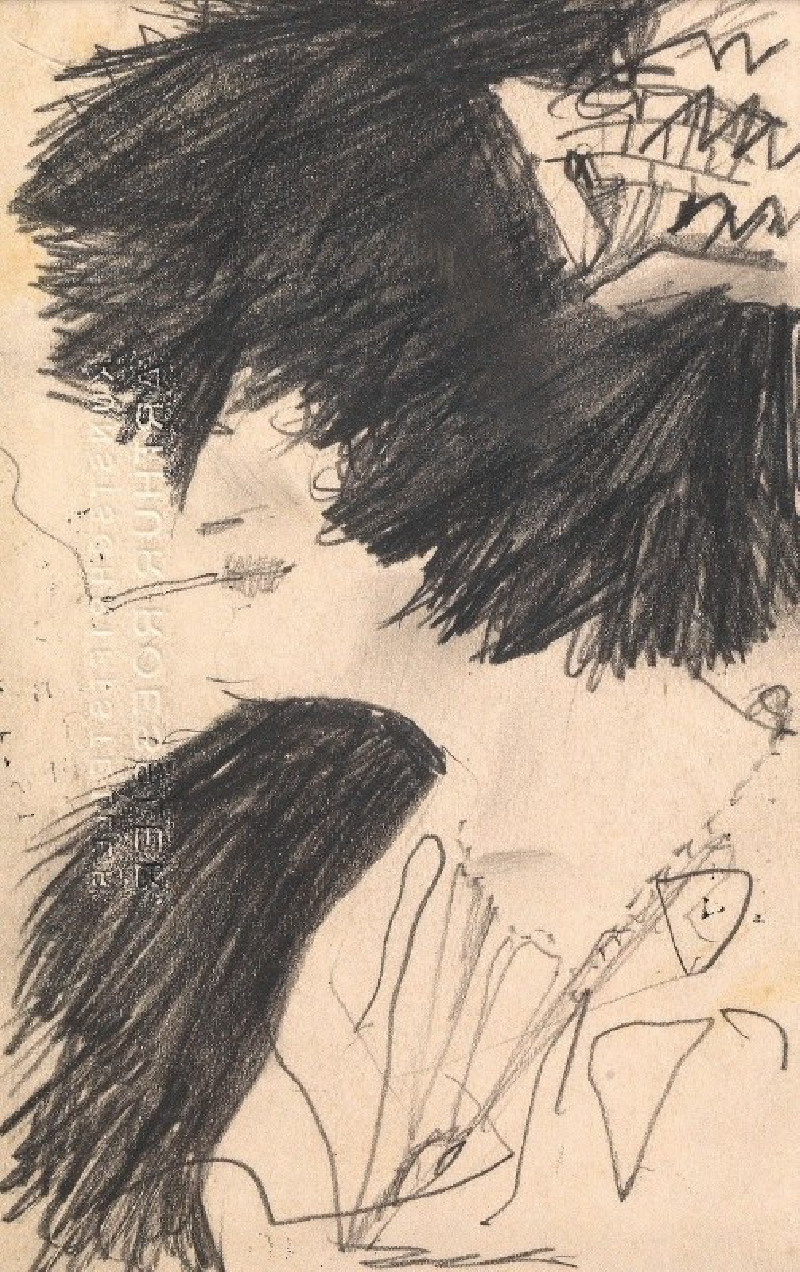Pirate’s Isle (1826)
Technique: Giclée quality print
Recommended by our customers
More about this artwork
David Cox's enchanting watercolor, "Pirate’s Isle," painted in 1826, transports viewers to a rugged and mysterious coastal landscape that stirs the imagination and invites adventure. Set against a backdrop of towering cliffs and distant mountains, the central focus of the painting is a group of figures on a rocky outcrop, overlooking the tranquil sea that gently brushes against the shore.These figures, clad in colorful, somewhat distressed garments, evoke a sense of a buccaneer's lifestyle, pointing and gazing outward, possibly scouting for approaching ships or planning their next venture on the high seas. The dramatic rock formations and robust trees suggest a hidden, inaccessible location, ideal for the secretive and often perilous life of pirates.Cox's masterful use of light and shadow intensifies the scene’s drama, while his soft brushwork gives the sky and water a serene, almost ethereal quality. This juxtaposition of tranquility with the hint of danger reflects the dual nature of pirate life — one moment calm and contemplative, the next fraught with peril.
Delivery
Returns
David Cox (29 April 1783 – 7 June 1859) was an English landscape painter, one of the most important members of the Birmingham School of landscape artists and an early precursor of Impressionism.
He is considered one of the greatest English landscape painters, and a major figure of the Golden age of English watercolour.
Although most popularly known for his works in watercolour, he also painted over 300 works in oil towards the end of his career, now considered "one of the greatest, but least recognised, achievements of any British painter."
His son, known as David Cox the Younger (1809–1885), was also a successful artist.

